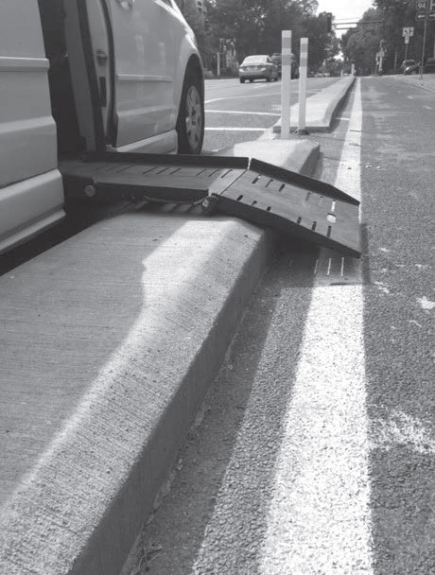2018: Bike Paths Limit Accessibility in Minneapolis
Access Press
9/10/2018 by the Minnesota Council on Disability
The City of Minneapolis’ Public Works Department recently started installing concrete bike lane barriers that limit access for many residents and visitors with disabilities. The concrete barriers measure about six inches high and are between 18 and 24 inches wide.
The concrete barrier separates the bike lane, which is next to the sidewalk curb from the traffic lane, not allowing a vehicle to pull up to the curb and unload a rider with a disability.
Many of the vehicles used to transport riders with disabilities have a passenger side ramp or lift. This presents a significant problem for paratransit providers and as well as others who provide rides to seniors and people with disabilities.
Metro Mobility management was questioned on how drivers were going to be able to provide door through door service as required by state law. Metro Mobility management agreed with Minneapolis officials, stating that unloading at existing bus stops, private properties with existing driveways, side streets, and defined loading zones would be adequate.
In addition to a potential problem with paratransit services, many of the concrete barriers allow for parking on the traffic side of the barrier. In these instances, riders/drivers using wheelchairs or scooters would need to deploy the ramp or lift onto the barrier thereby creating a drop off and a severe safety hazard when exiting the vehicle. The concrete barriers are systematically eliminating accessible parking for people with disabilities. The barriers also pose a risk to people with limited mobility, low vision, walking while texting and many others who must now navigate an extra curb while parking.

New barriers
This is not an issue of cyclists versus people with disabilities. The City of Minneapolis has a responsibility to meet the needs of everyone. This includes addressing access issues as well as working with bike groups to establish safe and usable bike lanes. It’s important that bike lanes are constructed in a way that protects the cyclist while maintaining required accessibility.

